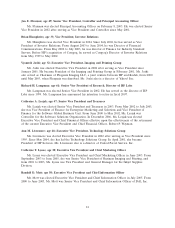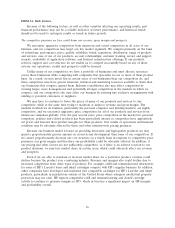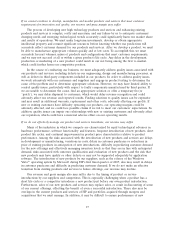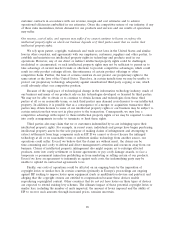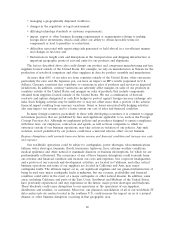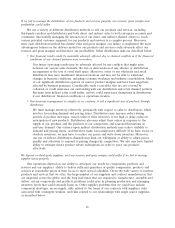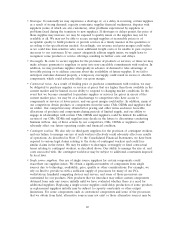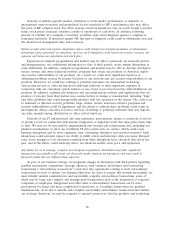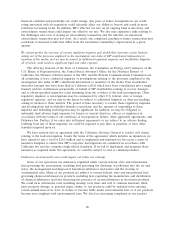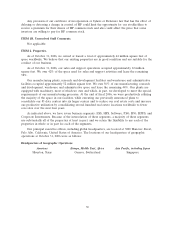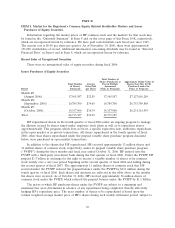HP 2006 Annual Report Download - page 27
Download and view the complete annual report
Please find page 27 of the 2006 HP annual report below. You can navigate through the pages in the report by either clicking on the pages listed below, or by using the keyword search tool below to find specific information within the annual report.unable to produce the quantities of those components necessary to satisfy our production
requirements. In addition, we sometimes purchase components from single source suppliers
under short-term agreements that contain favorable pricing and other terms but that may be
unilaterally modified or terminated by the supplier with limited notice and with little or no
penalty. The performance of such single source suppliers under those agreements (and the
renewal or extension of those agreements upon similar terms) may affect the quality, quantity
and price of supplies to HP. The loss of a single source supplier, the deterioration of our
relationship with a single source supplier, or any unilateral modification to the contractual terms
under which we are supplied components by a single source supplier could adversely effect our
revenue and gross margins.
The revenue and profitability of our operations have historically varied, which makes our future financial
results less predictable.
Our revenue, gross margin and profit vary among our products and services, customer groups and
geographic markets and therefore will likely be different in future periods than our current results.
Overall gross margins and profitability in any given period are dependent partially on the product,
customer and geographic mix reflected in that period’s net revenue. In particular, IPG and certain of
its business units such as printer supplies contribute significantly to our gross margin and profitability.
Competition, lawsuits, investigations and other risks affecting IPG therefore may have a significant
impact on our overall gross margin and profitability. Certain segments, and ESS in particular, have a
higher fixed cost structure than others and may experience significant operating profit volatility on a
quarterly basis. In addition, newer geographic markets may be relatively less profitable due to
investments associated with entering those markets and local pricing pressures. Market trends,
competitive pressures, commoditization of products, seasonal rebates, increased component or shipping
costs, regulatory impacts and other factors may result in reductions in revenue or pressure on gross
margins of certain segments in a given period, which may necessitate adjustments to our operations.
Unanticipated changes in HP’s tax provisions or exposure to additional income tax liabilities could affect
our profitability.
We are subject to income taxes in the United States and numerous foreign jurisdictions. Our tax
liabilities are affected by the amounts we charge for inventory, services, licenses, funding and other
items in intercompany transactions. We are subject to ongoing tax audits in various jurisdictions. Tax
authorities may disagree with our intercompany charges or other matters and assess additional taxes.
We regularly assess the likely outcomes of these audits in order to determine the appropriateness of
our tax provision. However, there can be no assurance that we will accurately predict the outcomes of
these audits, and the actual outcomes of these audits could have a material impact on our net income
or financial condition. In addition, our effective tax rate in the future could be adversely affected by
changes in the mix of earnings in countries with differing statutory tax rates, changes in the valuation of
deferred tax assets and liabilities, changes in tax laws and the discovery of new information in the
course of our tax return preparation process. In particular, the carrying value of deferred tax assets,
which are predominantly in the United States, is dependent on our ability to generate future taxable
income in the United States. Any of these changes could affect our profitability. Furthermore, our tax
provisions could be adversely affected as a result of any new interpretative accounting guidance related
to accounting for uncertain tax positions.
Our sales cycle makes planning and inventory management difficult and future financial results less
predictable.
Our quarterly sales have reflected a pattern in which a disproportionate percentage of each
quarter’s total sales occur towards the end of such quarter. This uneven sales pattern makes prediction
23



